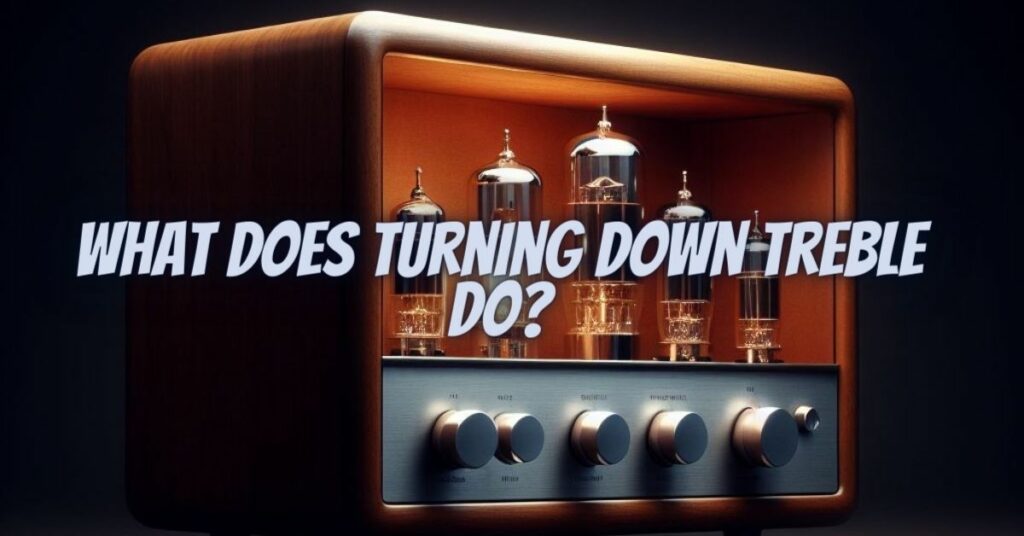Audio enthusiasts, musicians, and even casual listeners are often presented with various controls on their audio equipment, including knobs or sliders that adjust treble and bass. While many understand that increasing the treble control boosts high-frequency sounds and decreasing it reduces them, what does turning down treble do, and how does it affect the listening experience? In this comprehensive guide, we’ll explore the role of treble in audio, the consequences of reducing it, and the implications for your music and sound quality.
Understanding Treble in Audio
Treble, also known as high-frequency sound, is an essential component of audio. It refers to the higher-pitched tones and frequencies in a sound spectrum. Treble sounds include elements such as cymbals, high-pitched vocals, and the crispness in guitar strings. Understanding treble’s role in audio is vital for appreciating the effects of turning it down.
- Clarity and Detail:
- Treble frequencies contribute to the clarity and detail in music. Reducing treble can soften the edges of these high-pitched sounds, potentially making them less prominent in the mix.
- Brightness:
- Treble is often associated with brightness in audio. It imparts a sense of sparkle and brilliance to the music, making it more lively and engaging.
- Emotion and Atmosphere:
- High-frequency sounds can evoke emotion and atmosphere in music. The shimmer of cymbals in a drum set, for example, can create a sense of excitement or anticipation.
Effects of Turning Down Treble
When you turn down the treble control on your audio equipment, such as a stereo system, amplifier, or equalizer, several noticeable effects come into play:
- Reduction in Clarity:
- One of the most immediate effects is a reduction in clarity. High-frequency details, like the delicate nuances of a singer’s voice or the crispness of acoustic guitar strings, may become less pronounced.
- Softer Highs:
- Treble reduction softens high-pitched sounds, making them less prominent in the mix. This can result in a more subdued, mellow listening experience.
- Diminished Brightness:
- As treble is responsible for brightness in audio, turning it down can result in a less vibrant and less energetic sound.
- Decreased Presence:
- Treble frequencies often provide presence and definition to individual instruments and vocals. Reducing treble can make these elements appear less forward in the soundstage.
When to Turn Down Treble
The decision to turn down treble should be based on personal preference and the specific audio context. Here are some scenarios where reducing treble might be beneficial:
- Harsh Recordings:
- Some recordings or tracks may have excessive treble, leading to harshness or discomfort. Reducing treble in these cases can make the listening experience more enjoyable.
- Reducing Fatigue:
- Listening to music at high treble levels for extended periods can be fatiguing to the ears. Reducing treble can provide relief and make long listening sessions more comfortable.
- Tailoring Sound:
- Adjusting treble can be a creative tool for tailoring the sound to your liking. It can help emphasize different aspects of a track or genre.
Turning down treble in audio is a powerful tool for shaping your listening experience. It can soften harshness, reduce ear fatigue, and create a mellower, more subdued sound. However, it’s essential to use this control judiciously, as excessive treble reduction can lead to a loss of detail and brightness in your music. The key is to strike a balance that suits your preferences and the specific context in which you’re listening. By understanding the role of treble and its consequences when adjusted, you can fine-tune your audio experience to match your unique taste and enjoy music in a way that resonates with you.


